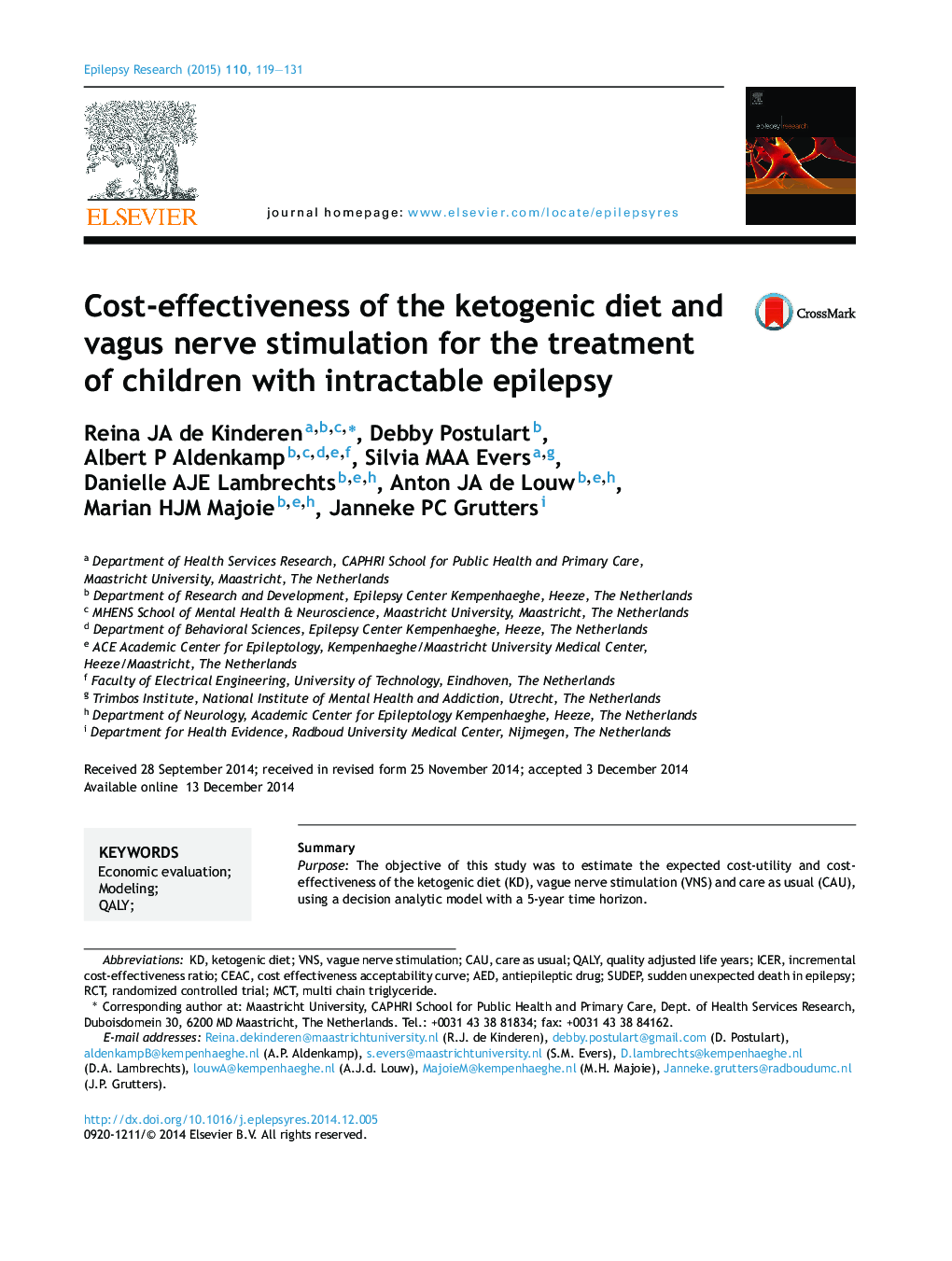| کد مقاله | کد نشریه | سال انتشار | مقاله انگلیسی | نسخه تمام متن |
|---|---|---|---|---|
| 6015334 | 1579913 | 2015 | 13 صفحه PDF | دانلود رایگان |
- We modeled three treatment options (KD, VNS and CAU) for refractory epilepsy.
- From an economic viewpoint, CAU is the optimal treatment at 12 months.
- However, VNS and KD should not be ignored as a treatment option.
- There is great need for large high quality studies to identify responding subgroups.
- It is wise to include a broader assessment of effectiveness (e.g. QOL) in trials.
SummaryPurposeThe objective of this study was to estimate the expected cost-utility and cost-effectiveness of the ketogenic diet (KD), vague nerve stimulation (VNS) and care as usual (CAU), using a decision analytic model with a 5-year time horizon.MethodsA Markov decision analytical model was constructed to estimate the incremental costs, quality-adjusted life years (QALYs) and successfully treated patient (i.e. 50% or more seizure reduction) of the treatment strategies KD, VNS and CAU, from a health care perspective. The base case considered children with intractable epilepsy (i.e. two or more antiepileptic drugs had failed) aged between 1 and 18 years. Data were derived from literature and expert meetings. Deterministic and probabilistic sensitivity analyses were performed.ResultsOur results suggest that KD is more effective and less costly, and thus cost-effective compared with VNS, after 12 months. However, compared to CAU, neither KD nor VNS are cost-effective options, they are both more effective but also more expensive (â¬346,899 and â¬641,068 per QALY, respectively). At 5 years, VNS is cost-effective compared with KD and CAU (â¬11,378 and â¬68,489 per QALY, respectively) and has a 51% probability of being cost-effective at a ceiling ratio of â¬80,000 per QALY.ConclusionsOur results suggest that on average the benefits of KD and VNS fail to outweigh the costs of the therapies. However, these treatment options should not be ignored in the treatment for intractable epilepsy in individual or specific groups of patients. There is a great need for high quality comparative studies with large patient samples which allow for subgroup analyses, long-term follow-up periods and outcome measures that measure effects beyond seizure frequency (e.g. quality of life). When this new evidence becomes available, reassessment of the cost-effectiveness of KD and VNS in children with intractable epilepsy should be carried out.
Journal: Epilepsy Research - Volume 110, February 2015, Pages 119-131
